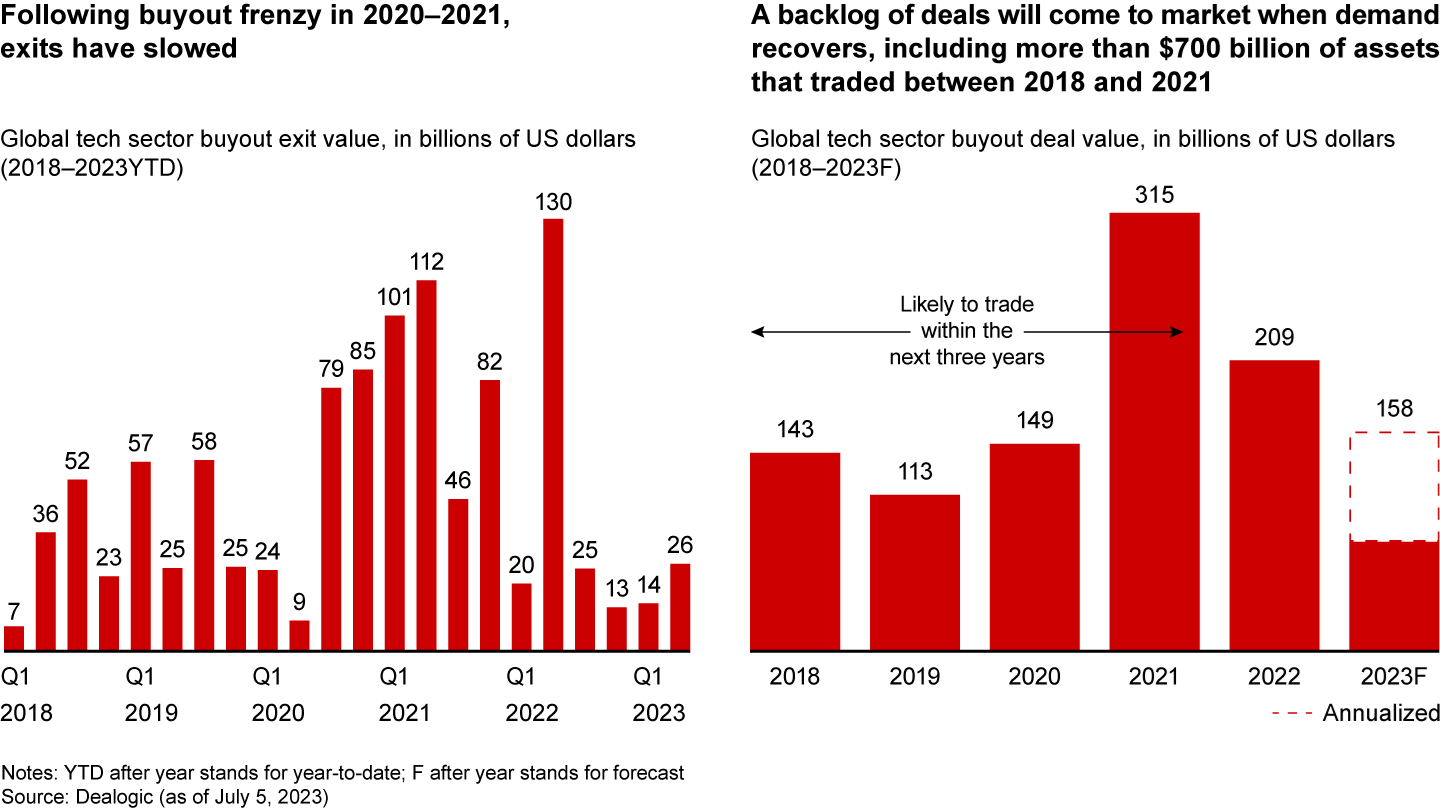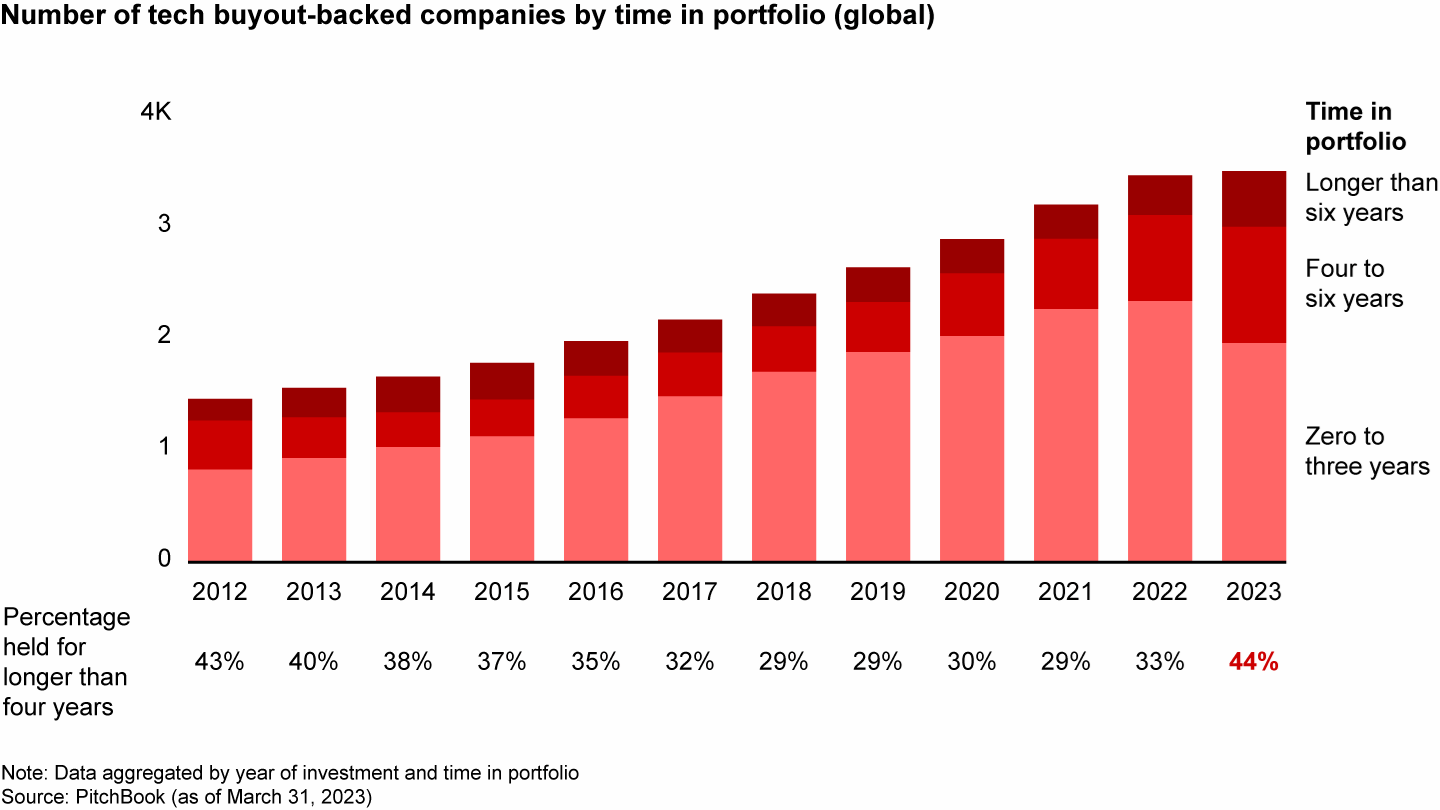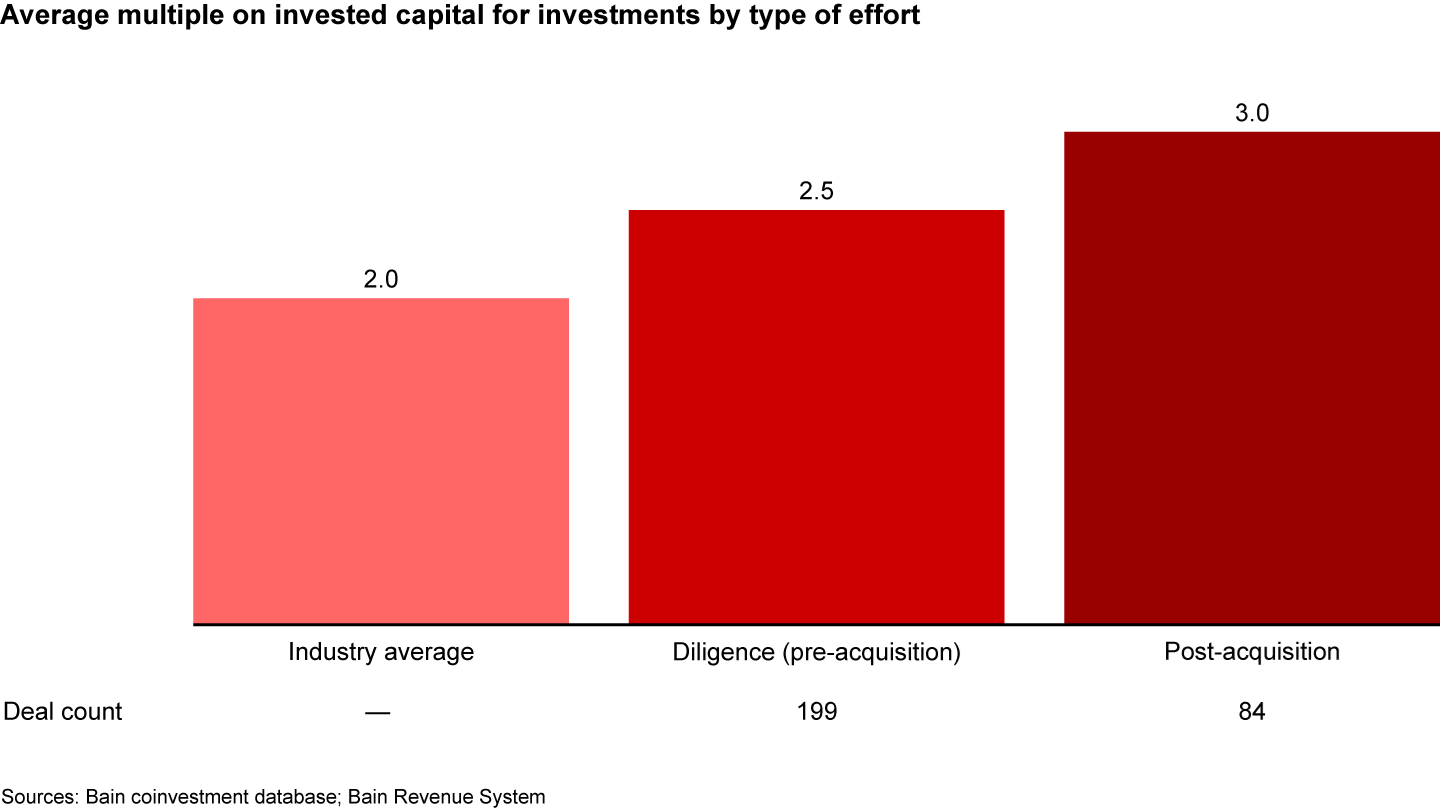Technology Report

Executive Summary
- Reduced exits, extended hold times, and steady dry powder reserves point toward an incoming wave of tech asset exits that will create a crowded, competitive buyer’s market.
- Firms that have prepared to stand out will fare better than average, while others may struggle to sell mature assets in their portfolio.
This article is part of Bain's 2023 Technology Report.
The volume of technology deals has slowed since mid-2022 for a number of reasons, including limited debt availability amid rising interest rates and declines in asset values that have left buyers unable to meet sellers’ asking prices. Successful deals have relied on greater equity contributions (with expectations to refinance later), partial equity sales to fund growth, and a greater proportion of add-ons rather than standalone or platform assets. Overall, the pace of tech deals since the third quarter of 2022 continues to be slow, in line with the broader deal market.
Exits are also down—on average, about $20 billion per quarter in the first half of 2023 compared with $107 billion per quarter in the first half of 2021 and $75 billion per quarter in the first half of 2022. A growing backlog of deals, including more than $700 billion of tech assets purchased between 2018 and 2021 (see Figure 1), has led to longer hold times of tech portfolio companies. In 2023, nearly half of tech portfolio companies have been held for more than four years, and 15% have waited more than six years. For the first time since 2012, more than 40% of tech portfolio companies are being held for more than four years (see Figure 2). This backlog of long-held portfolio assets is growing more quickly than the mountainous level of dry powder that is holding steady, which will create a buyer’s market when activity picks up (for more, read Bain’s “Stuck in Place: Private Equity Midyear Report 2023”).
Tech deals have slowed over the past year, and a backlog of deals points to a coming buyer's market


Nearly 45% of current tech portfolio companies have been held for longer than four years


How to add value
With multiples trending downward and a competitive market on the horizon, investors should focus on adding value to existing assets by growing earnings, redefining operational processes that may have been ignored for a while, raising efficiency with new tools, and seeking new areas of growth. Within software, we see several interdependent trends.
- Focus on margin improvement: As market valuations have declined, investors have shifted focus from growth at any cost to rewarding profitability. To expand margins, companies need to build scale, increase automation, and boost productivity—all while managing the costs of growth. Operational metrics and benchmarks become more important as companies eliminate low-value work, automate less-complex tasks, and explore offshore opportunities.
- Address weaknesses in the go-to-market model: A slowing economy has renewed the focus on sales and marketing capabilities. By synchronizing sales, marketing, ops, and product functions, companies can design focused, repeatable sales plays. Additionally, the emergence of product-led growth lets software companies engage customers with a self-service model (for more, read the Bain Brief “What It Really Takes to Develop Product-Led Growth”).
- Evaluate AI-driven disruption and efficiency improvements: The recent boom in consumer AI usage and business-to-business applications has led to a variety of new use cases, specifically in two key areas: R&D and enablement tools. Portfolio companies are evaluating the potential of generative AI, and they are focusing their R&D efforts on areas of growth while pulling back on distractions (for more, see the related chapter in this report, “AI Investors: Act Fast, Act Wisely”).
- Consider new growth vectors: Companies are developing the next phase of their growth strategies, which should include adjacencies, new regions, and buy and build through M&A.
When to add value
Portfolio activism pays off at any point in the investment process, from early-stage due diligence to preparing for exit. We have seen better-than-average returns, up to three times multiple on invested capital (MOIC), with post-acquisition activism (see Figure 3).
Post-acquisition portfolio actions can deliver up to a three times multiple on invested capital


The biggest returns come from engaging early, as close to day one as possible, as well as engaging later, with plans to move from good to great before an exit.
- Engage early to strengthen capabilities. Setting strategy along with substantial support in capability-level execution can improve earnings and boost the exit price.
One example of adding value soon after acquisition comes from a software-as-a-service company offering critical data and communications IT software for business clients that wanted to develop a plan for efficient growth. The company started by identifying prospects and developing a channel strategy that shifted focus to its highest-priority accounts. Among other actions, the company diagnosed sales coverage, accelerated the sales pipeline, and assessed discounting and price increase practices in order to maximize revenue. A detailed diagnostic across marketing channels helped it differentiate its message and target the right audience. Online, it ran structured A/B tests and improved the way it measured lead tracking and revenue projections, using benchmarks from OPEXEngine to compare performance across industries. Through these actions, the company identified opportunities to raise earnings by about $40 million, mostly through price increases and new market leads. - Engage later with targeted actions. For companies already performing well, strategic investments that raise their game from good to great can deliver the greatest punch—on average, a 50% increase in MOIC within a year of targeted engagement, mostly from the work leading to a successful exit at an attractive price.
For example, one educational technology company, a leading provider of online test and assessment solutions, had already achieved significant organic growth based on the strength of its product. An inconsistent go-to-market approach that included investing too much in accounts unlikely to deliver the necessary returns, however, prevented the company from achieving its full potential.
The company improved its go-to-market strategy to capitalize on its strong product advantage and to gain market share before its sale. It assessed the competitive landscape and redefined M&A objectives to articulate a pathway to further growth. Pushing a faster execution helped the company get more out of its market traction and trajectory, which boosted equity value during the sales process.
These actions took an already remarkable 7 times MOIC at the start of the engagement and raised it to 14 times at exit. A new segmentation of customers offered clarity on service and buying behavior for 13,000 potential customers. The company crystallized its strategy, revisited ideas for adjacency and acquisitions, and improved competitive dynamics to create the right dialogue for exit. Within two years, the private equity owners completed a partial sale of the business, keeping a sizable chunk themselves given their newfound confidence in the business.
Investors and portfolio managers that don’t add significant value to their software assets will struggle to sell among a growing slate of mature assets. Tech investors that have done the work necessary to improve earnings are more likely to succeed in the upcoming competitive buyer’s market with assets that stand out.